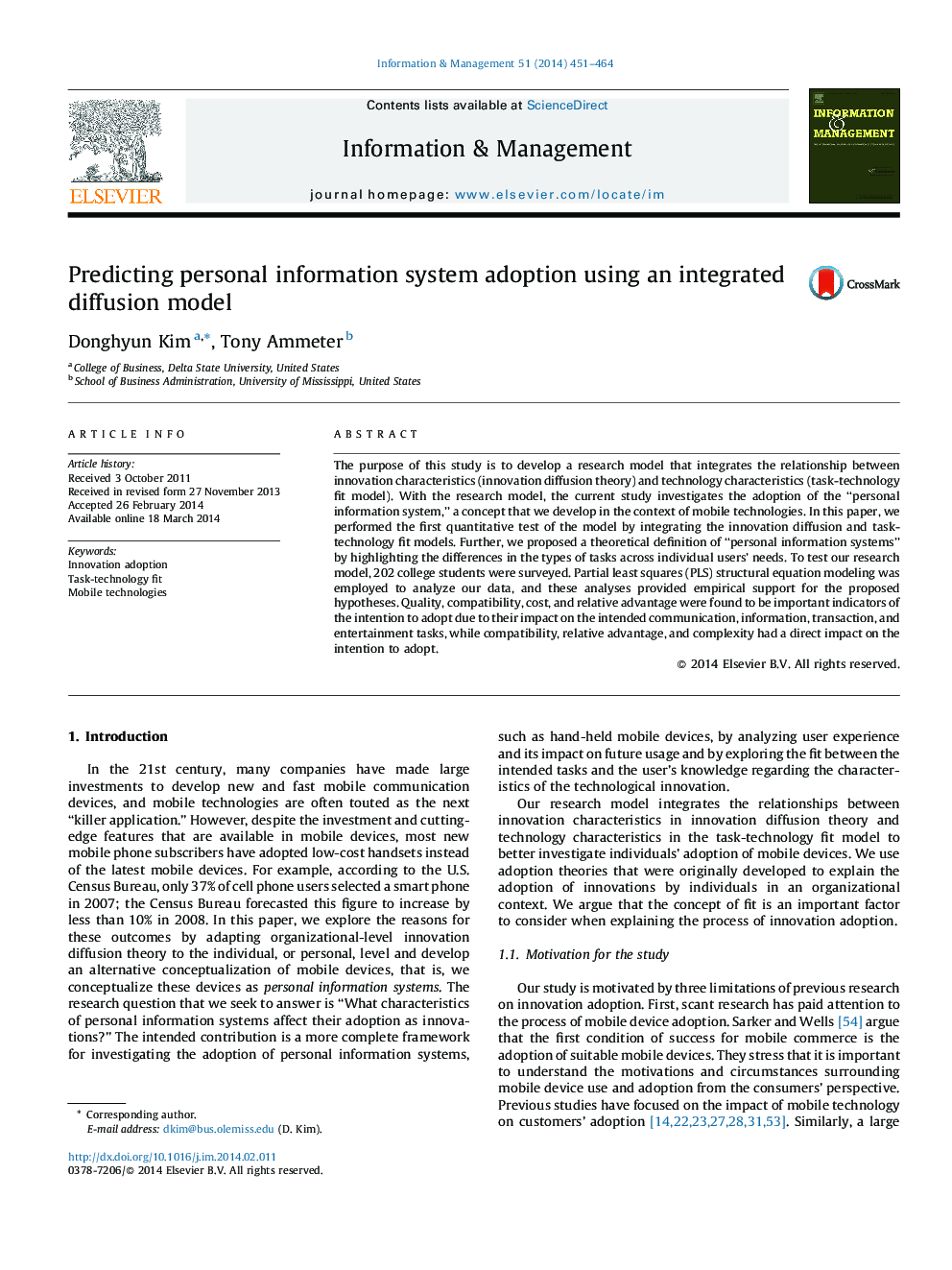| Article ID | Journal | Published Year | Pages | File Type |
|---|---|---|---|---|
| 553257 | Information & Management | 2014 | 14 Pages |
•Defining the “personal information system.”•Developing a research model integrating the innovation diffusion theory and the task-technology fit model.•Empirical tests show the direct and indirect effects of five PIS usage drivers through four features of PIS to adoption.
The purpose of this study is to develop a research model that integrates the relationship between innovation characteristics (innovation diffusion theory) and technology characteristics (task-technology fit model). With the research model, the current study investigates the adoption of the “personal information system,” a concept that we develop in the context of mobile technologies. In this paper, we performed the first quantitative test of the model by integrating the innovation diffusion and task-technology fit models. Further, we proposed a theoretical definition of “personal information systems” by highlighting the differences in the types of tasks across individual users’ needs. To test our research model, 202 college students were surveyed. Partial least squares (PLS) structural equation modeling was employed to analyze our data, and these analyses provided empirical support for the proposed hypotheses. Quality, compatibility, cost, and relative advantage were found to be important indicators of the intention to adopt due to their impact on the intended communication, information, transaction, and entertainment tasks, while compatibility, relative advantage, and complexity had a direct impact on the intention to adopt.
